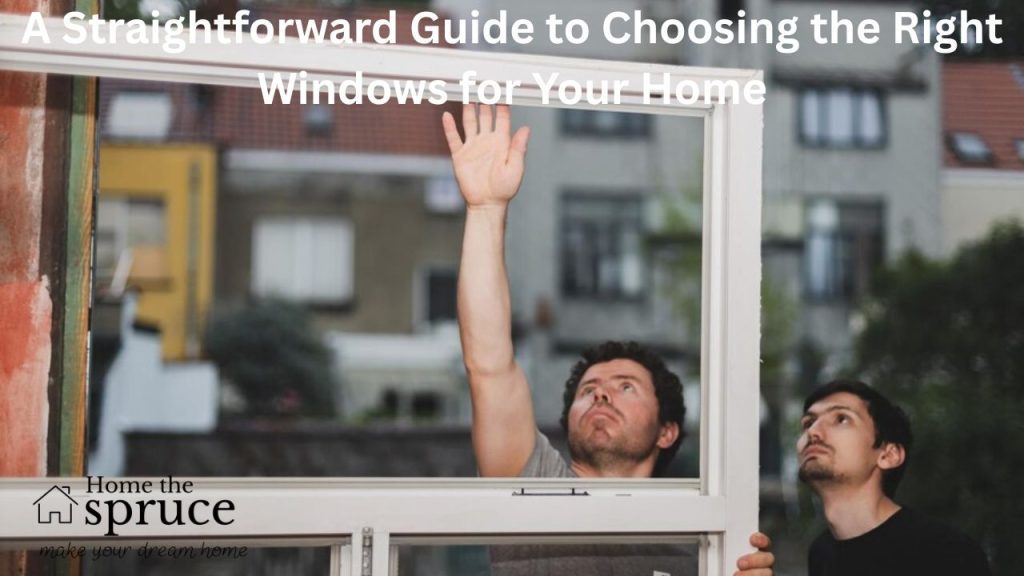Replacing your windows isn’t just about sprucing up the exterior. It’s an opportunity to boost your home’s warmth, energy performance, and overall feel. But with so many materials, glazing types, and styles to choose from, it can be tricky to know where to start. Do you go with the clean lines of aluminium, the charm of timber, or the low-fuss reliability of uPVC? Let’s walk through the key points to help you find the right fit.

If you’re exploring your options with a Hertfordshire double glazing company, the good news is there’s no shortage of experience or choice. But beyond the surface, it’s worth thinking carefully about what your windows need to do keeping in the warmth, letting in the light, and looking good while they’re at it. The right combination of style, material and glazing can make all the difference to your day-to-day comfort.
1. Let Your Home’s Personality Take the Lead
Not all windows suit all homes. A design that looks perfect on a sleek new build may stick out on a Victorian terrace.
- For period properties, timber sash or classic casement windows tend to blend in beautifully, preserving the building’s original character.
- Modern homes often pair well with slimline aluminium or clean uPVC frames.
- After a touch of drama? Bay and bow windows add space and light, while tilt-and-turn designs are smart, modern, and practical.
2. Keep an Eye on Energy Performance
One of the main reasons people upgrade their windows is to make their homes more energy-efficient and rightly so.
- Double glazing usually hits the sweet spot between performance and price.
- In colder areas or homes exposed to the elements, triple glazing offers superior insulation.
- Look for Low-E glass to reflect heat back indoors and reduce heat loss.
- Opt for gas-filled units argon or krypton are excellent insulators.
- Always check the energy rating. Anything A or above is a solid choice.
3. Choose a Frame That Fits Your Lifestyle
The frame material affects how your windows look, feel, and function not to mention how much maintenance they’ll need.
- uPVC: Affordable, easy to maintain, and widely available, though it can lack visual flair.
- Aluminium: Sleek and tough, offering a crisp, contemporary finish great for urban or minimalist designs.
- Timber: Beautiful and natural, especially for older properties, but it does need some TLC over time.
- Composite: The hybrid option wood inside for warmth, aluminium outside for weather protection.
4. Don’t Overlook Security
Windows are a potential entry point, so solid security features are essential—especially on ground floors.
- Go for multi-point locking systems to keep things secure.
- Choose laminated or toughened glass to resist break-ins.
- Consider windows with built-in alarm sensors for an added layer of protection.
5. Think About Airflow
Ventilation isn’t the most exciting feature, but it’s vital especially in areas prone to condensation or cooking smells.
- Casement windows let in plenty of fresh air and are easy to operate.
- Tilt-and-turn models are great for controlling airflow without compromising security.
- Trickle vents allow a gentle stream of air even when the windows are closed perfect in winter.
- In rooms like bathrooms and kitchens, windows with integrated vents help manage moisture levels.
6. Maintenance: Know What You’re Signing Up For
Let’s be honest some materials are easier to live with than others.
- uPVC and aluminium are almost maintenance-free just wipe them down now and then.
- Timber needs more love sanding, painting or staining every few years.
- Composite frames give you a wooden look without the ongoing upkeep.
7. Get to Grips with the Costs
Budget will always be part of the equation, so it’s worth knowing what to expect:
- uPVC windows usually cost between £250–£600 each.
- Aluminium frames typically fall between £500–£1,200.
- Timber windows range from £700 up to £1,500 or more.
- Triple glazing? Add roughly 15–20% extra compared to standard double glazing.
While it may feel like a big investment upfront, high-quality windows can slash energy bills and increase the value of your property. You might also be eligible for eco grants or home upgrade schemes, depending on where you live.
8. Installation Matters More Than You Think
Even top-spec windows can cause problems if they’re badly installed. Poor workmanship can lead to draughts, water ingress, or even damage to your home’s structure.
Choose an installer with proper credentials FENSA or CERTASS accreditation is the gold standard. It means the work meets building regulations, and often comes with warranties too.
Final Thoughts
New windows are about more than just appearances they’re an upgrade to your home’s comfort, efficiency, and security. By choosing the right materials, glazing, and installer, you’ll not only improve the way your home looks and feels you’ll also make a smart, long-term investment.








